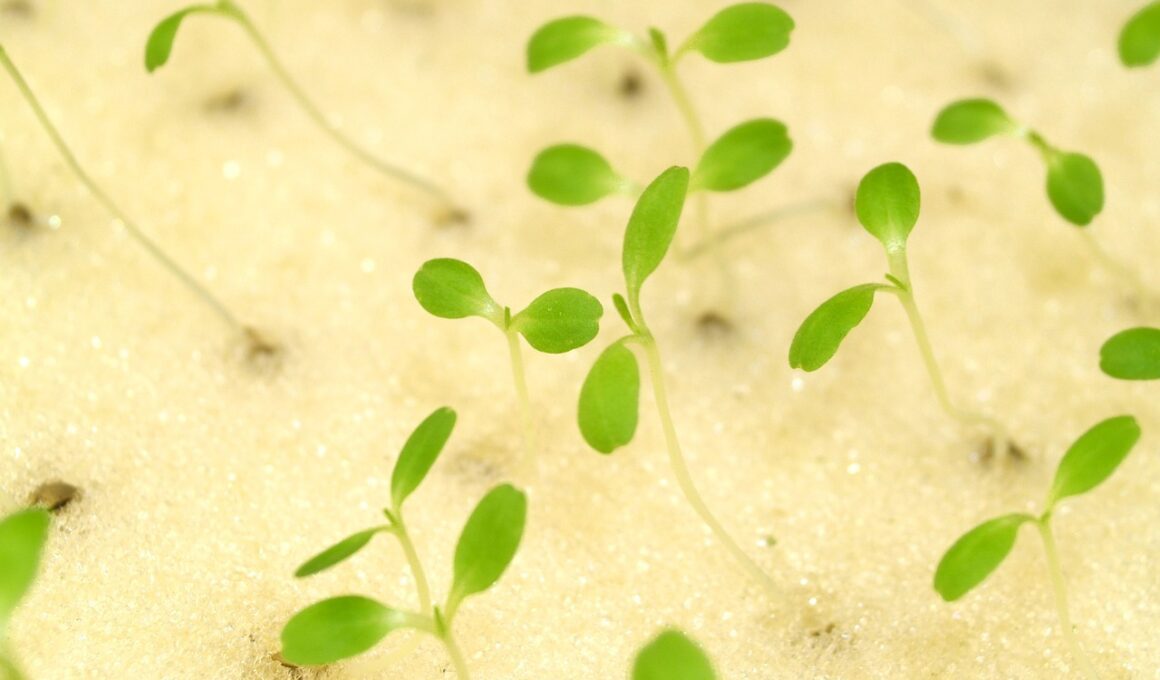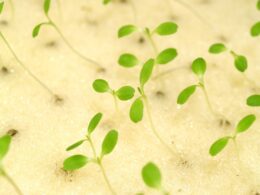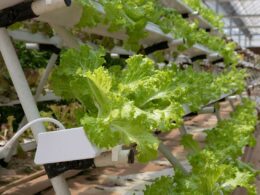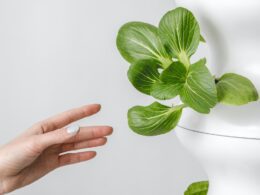Are you frustrated with your hydroponic lettuce constantly rotting? It can be discouraging to put in the time and effort to grow your own fresh produce, only to have it go to waste.
But don’t worry, you’re not alone. Rotting lettuce is a common issue in hydroponic systems, but with a better understanding of the causes and preventative measures, you can avoid this problem and enjoy healthy and thriving lettuce.
In this article, we’ll explore the various reasons why your hydroponic lettuce may be rotting and provide practical solutions to help you maintain proper water quality, monitor your system regularly, and implement preventative measures.
By following these guidelines, you can ensure that your lettuce stays fresh, crisp, and delicious, from the time you harvest it to the moment you serve it at your table.
Let’s dive in!
Understand the Causes of Rotting Lettuce in Hydroponic Systems
You’re probably wondering why your beautiful greens are turning slimy and mushy in your hydroponic system. Well, there are a few things that can cause rotting lettuce in hydroponics, including the type of lettuce you’re growing.
Some hydroponic lettuce varieties are more susceptible to rot than others. For example, butterhead lettuce is more prone to disease than romaine lettuce. It’s important to research the variety you’re growing and ensure it’s suitable for hydroponics.
Another common cause of rotting lettuce in hydroponics is fungus. Fungus thrives in warm, humid environments, which are common in hydroponic systems. To prevent fungus in your hydroponic system, it’s important to maintain proper air circulation and keep the water temperature below 70°F.
You can also add beneficial microbes to your hydroponic system to help fight off harmful pathogens. Preventing rotting lettuce in hydroponics requires attention to detail and proper maintenance. Make sure your system is properly balanced, with the right nutrients and pH levels. Regularly clean your system and replace any contaminated water.
By following these tips, you can ensure your hydroponic lettuce stays healthy and delicious for the perfect salad.
Maintain Proper Water Quality
Maintaining proper water quality is key to ensuring healthy and thriving lettuce in your hydroponic system. One of the most important factors to consider is the pH level of your water.
Lettuce grows best in a pH range of 5.5-6.5, so it’s essential to regularly test and adjust your water’s pH levels to keep it within this range. If the pH is too high or too low, it can cause your lettuce to wilt, turn yellow, or even die.
Another crucial aspect to consider is the nutrient concentration in your water. Lettuce needs a balanced mix of nutrients to grow properly, including nitrogen, phosphorus, and potassium. However, too much or too little of these nutrients can cause problems, such as root rot or stunted growth.
Testing your water regularly and adjusting the nutrient levels accordingly can help prevent these issues and ensure your lettuce is getting the right nutrients it needs to thrive.
In addition to pH levels and nutrient concentration, it’s also important to keep your water clean and free of harmful bacteria or algae. Regularly changing your water and properly sterilizing your system can help prevent the buildup of harmful organisms that can cause your lettuce to rot.
By maintaining proper water quality, you can create a healthy and thriving environment for your hydroponic lettuce to grow and flourish.
Can Rotting Lettuce in Hydroponics Lead to Root Rot?
Rotting lettuce in hydroponics is a concerning issue that could potentially lead to root rot. Roots rot hydroponics can occur when the lettuce plant’s root system becomes infected with harmful pathogens due to excessive moisture or poor aeration. Monitoring the water pH levels and ensuring proper ventilation can help prevent this problem and maintain a healthy hydroponic lettuce crop.
Monitor Your System Regularly
To ensure the health and longevity of your hydroponic plants, it’s essential to monitor your system regularly. Check for signs of rotting, such as discolored or wilting leaves, and take action immediately.
Adjust nutrient levels as needed and maintain proper air circulation to promote healthy growth. By staying on top of these key points, you’ll have a thriving hydroponic garden in no time.
Check for Signs of Rotting
Take a closer look at your hydroponic lettuce to spot any signs of rotting and prevent further damage. Here are some things to keep an eye out for:
- If you notice any brown or black spots on your lettuce leaves, this could be a sign of rotting.
- A foul odor coming from your hydroponic system is another indication that your lettuce is beginning to rot.
- If your lettuce feels slimy or mushy to the touch, it may be rotting.
If you notice any of these signs, it’s important to act quickly to prevent the rot from spreading to other plants. Remove the affected lettuce immediately and dispose of it properly.
Then, thoroughly clean your hydroponic system to prevent any bacteria or fungi from growing and causing further damage.
Remember, spotting the signs of rotting early can mean the difference between a thriving hydroponic system and a failed one.
Adjust Nutrient Levels as Needed
Before jumping to conclusions and disposing of your crops, it’s crucial to check if the nutrient levels in your hydroponic system are balanced and adjust them accordingly. Nutrient deficiencies and pH imbalances are common issues in hydroponic lettuce growth, which can lead to rotting.
It’s important to ensure that your plants have access to all the necessary nutrients, such as nitrogen, phosphorus, and potassium. You can use a hydroponic nutrient solution to provide your plants with the right mix of nutrients in the correct proportions.
pH imbalances can also lead to nutrient lockout, which means that your plants are unable to absorb the nutrients they need. You can use a pH meter to monitor the pH levels in your hydroponic system and adjust them as needed.
Maximizing yields requires optimizing nutrient levels for hydroponic lettuce growth. By ensuring that your plants have access to the right mix of nutrients and maintaining the pH levels in your hydroponic system, you can prevent rotting and achieve healthy, thriving crops.
Maintain Proper Air Circulation
Now that you’ve adjusted the nutrient levels, it’s time to focus on improving ventilation and optimizing airflow in your hydroponic system. Poor air circulation can lead to a buildup of moisture, which can cause your lettuce to rot. To prevent this from happening, here are some tips to help you maintain proper air circulation:
-
Place a fan near your hydroponic system to improve airflow. This will help circulate air around your plants, preventing moisture buildup and reducing the risk of rot.
-
Check your system’s ventilation to ensure it’s working correctly. If it doesn’t have a ventilation system, consider adding one to circulate air and prevent moisture buildup.
-
Keep your system clean and free of debris. Debris can trap moisture and create pockets of stagnant air, leading to rot.
-
Monitor the humidity levels in your growing area. High humidity can contribute to moisture buildup, so keep humidity levels in check.
By following these tips and maintaining proper air circulation, you can prevent your hydroponic lettuce from rotting and ensure your plants stay healthy and thriving. So be sure to take the necessary steps to optimize airflow in your system and keep moisture levels under control.
Implement Preventative Measures
To prevent further issues with your hydroponic system, there are a few preventative measures you can take. Firstly, consider using an air stone to increase oxygen levels in the water and improve overall plant health.
Secondly, adding a beneficial bacteria supplement can help fight off harmful bacteria and promote healthy root growth.
Lastly, regularly sterilizing your equipment can prevent the buildup of harmful bacteria and ensure the longevity of your system.
Use an Air Stone
You can easily prevent your lettuce from wilting by using an air stone in your hydroponic system. An air stone is a small device that releases bubbles into the water, increasing the oxygen levels in the solution. This added oxygen helps prevent root rot and keeps your lettuce healthy.
Here are some benefits of using air stones in hydroponics:
- Increased oxygen levels in the water
- Prevention of root rot
- Improved nutrient uptake for your plants
There are different types of air stones for hydroponic lettuce, including ceramic and plastic options. Ceramic air stones are more durable and provide a finer bubble size, while plastic air stones are more affordable and easier to clean.
Whichever type of air stone you choose, make sure it is the appropriate size for your hydroponic system and regularly clean it to ensure it is working properly.
Incorporating an air stone into your hydroponic setup is a simple and effective way to prevent your lettuce from rotting.
Add a Beneficial Bacteria Supplement
If you want to keep your greens fresh and healthy, consider adding a beneficial bacteria supplement to your hydroponic system. These supplements can provide numerous benefits, such as enhancing nutrient uptake, preventing disease, and improving plant growth.
In hydroponic systems, the absence of soil can lead to a lack of beneficial microorganisms that are typically found in soil. Adding a bacteria supplement can help reintroduce these important microbes, creating a healthier environment for your plants to thrive in.
There are several types of bacteria supplements available for hydroponic systems, including Bacillus subtilis, Pseudomonas fluorescens, and Rhizobium leguminosarum. Bacillus subtilis can help prevent root rot and improve nutrient uptake, while Pseudomonas fluorescens can help prevent disease and promote growth. Rhizobium leguminosarum is particularly useful for leguminous plants, such as beans and peas, as it forms a symbiotic relationship with the plant and helps fix nitrogen in the system.
By adding these beneficial bacteria supplements to your hydroponic system, you can promote a healthy, thriving garden and prevent any unwanted rot or disease.
Sterilize Equipment
Before diving into setting up your hydroponic system, make sure to sterilize all of your equipment to prevent any unwanted bacteria or disease from hindering the growth of your plants. Equipment sterilization is a crucial step in maintaining a healthy and productive hydroponic garden.
You can use a variety of cleaning techniques such as using bleach, hydrogen peroxide, or other disinfectants to sanitize your equipment. Make sure to clean every surface of your equipment thoroughly, including the reservoir, tubing, and grow trays.
One effective method is to soak your equipment in a solution of 1-part bleach to 9-parts water for at least 30 minutes. Afterward, rinse your equipment with clean water and allow it to air dry.
It’s also important to regularly clean and sanitize your equipment to prevent any build-up of bacteria or algae. By taking the time to properly sterilize your equipment, you can ensure the health and longevity of your hydroponic garden.
Harvest and Store Your Lettuce Properly
When it comes to harvesting and storing your lettuce properly, there are a few key points to keep in mind.
First, make sure to cut the stem at the right angle to promote healthy regrowth.
Next, rinse and dry the lettuce thoroughly to prevent any excess moisture from causing rot or mold.
Finally, store your lettuce in the refrigerator properly to maintain freshness and crispness. By following these simple steps, you can ensure that your hydroponic lettuce stays healthy and delicious from harvest to plate.
Cut Stem at the Right Angle
Cutting the stem at a sharp angle helps the plant easily absorb nutrients and water, preventing any future wilting or drooping. When harvesting your lettuce, it’s important to use proper cutting technique to ensure the longevity of your crop. Here are some tips to get the perfect cut:
- Use a sharp, clean knife or scissors to cut the stem. This will prevent any damage or infection to the plant.
- Cut the stem at a 45-degree angle. This angle allows for maximum surface area for the plant to absorb nutrients and water.
- Cut the stem as close to the base as possible. This will allow for new growth to occur and extend the life of your plant.
Immediately place the cut lettuce in a container filled with cool water. This will help the lettuce maintain its crispness and freshness.
By following these simple steps, you can prevent your hydroponic lettuce from rotting and ensure a healthy, delicious crop every time. Remember, the proper cutting technique and stem angle are key to the longevity of your lettuce.
Rinse and Dry Thoroughly
After cutting the stem at a sharp angle, rinsing and drying your harvested lettuce thoroughly is crucial to maintaining its crispness and freshness. The importance of proper drying can’t be emphasized enough.
Even the slightest bit of moisture left on the leaves can create an environment for bacteria to grow in hydroponic systems, which can lead to rotting.
To prevent bacterial growth, gently rinse the lettuce under cool running water, making sure to remove any debris or dirt. After rinsing, place the leaves on a clean towel and pat them dry.
It’s important to make sure the leaves are completely dry before storing them. This can be achieved by leaving them out to air dry for a few minutes or by using a salad spinner.
By taking the time to thoroughly rinse and dry your lettuce, you can ensure that it stays fresh and healthy for longer periods of time.
Store in the Refrigerator Properly
To maintain the crispness and freshness of your harvested lettuce, it’s important to store it properly in the refrigerator. Proper refrigeration is key to preventing your hydroponic lettuce from rotting prematurely. Here are some tips to help you store your lettuce properly:
- Store your lettuce in a plastic bag or container with a lid. This will help to keep the moisture in and prevent the lettuce from wilting.
- Make sure your refrigerator is set to the proper temperature. Lettuce should be stored at a temperature between 32-36 degrees Fahrenheit.
Do not wash your lettuce before storing it in the refrigerator. This can cause excess moisture and lead to rotting.
- Keep your lettuce away from ethylene-producing fruits and vegetables such as apples, bananas, and tomatoes. Ethylene gas can cause lettuce to ripen and spoil faster.
- Check your lettuce regularly for any signs of spoilage. If you notice any brown or slimy spots, it’s time to toss it out.
By following these simple steps, you can help to extend the life of your hydroponic lettuce and ensure that it stays fresh and crisp for as long as possible. Proper refrigeration and temperature control are key to preventing premature rotting and ensuring that your lettuce is safe to eat.
Frequently Asked Questions
What are the benefits of hydroponic lettuce compared to traditional soil-grown lettuce?
Are you curious about the benefits of hydroponic lettuce compared to traditional soil-grown lettuce?
Flavor differences and environmental impact are two factors to consider when exploring the hydroponic vs soil grown options. Hydroponic lettuce tends to have a milder flavor and a crisper texture, while soil-grown lettuce can have a more intense taste.
In terms of environmental impact, hydroponics use less water and pesticides, and can be grown year-round regardless of weather conditions.
When evaluating the economics of hydroponic lettuce production, cost comparison and yield analysis are important factors to consider. While the initial investment for hydroponic systems can be high, they can ultimately result in higher yields and profits compared to traditional soil farming.
So, if you’re looking for a sustainable and potentially profitable way to grow lettuce, hydroponics might be worth exploring further.
Can I use tap water for my hydroponic system or do I need to use filtered or distilled water?
If you’re considering using tap water for your hydroponic system, it’s important to consider the quality of the water. Tap water can contain a variety of chemicals and minerals that might not be beneficial for your hydroponic nutrient solutions.
These chemicals and minerals can build up in your system over time and cause issues with the health of your plants. That’s why it’s recommended to use filtered or distilled water for your hydroponic system.
By using clean, filtered water, you can ensure that your plants are getting the best possible nutrients and avoid any potential issues with tap water quality.
How often should I change the nutrient solution in my hydroponic system?
To ensure healthy growth of your hydroponic plants, it’s important to regularly change the nutrient solution in your system. It’s also important to monitor and adjust the pH levels, which should ideally be between 5.5 to 6.5. You can test the nutrient solution with a pH meter or test strips to ensure it’s within this range.
It’s also a good idea to regularly test the nutrient solution for electrical conductivity (EC) levels. This will help you determine when it’s time for a nutrient solution change. By maintaining optimal pH levels and regularly testing the nutrient solution, you can ensure your hydroponic plants are receiving the nutrients they need to thrive. This will also help you avoid any potential issues with rotting or other plant health problems.
Are there any natural remedies or treatments for preventing lettuce rot in hydroponic systems?
Preventing rot in hydroponic lettuce can be achieved using natural remedies. One effective method is to incorporate beneficial bacteria into your hydroponic system. These bacteria help to combat harmful pathogens, keeping your lettuce healthy and free of rot.
Additionally, ensuring proper air circulation and avoiding overcrowding in your system can also help prevent rot. It’s important to regularly check your plants for any signs of rot and remove any infected leaves immediately to prevent further spread.
By incorporating these natural remedies into your hydroponic system, you can help ensure the longevity and health of your lettuce crop.
How do I know when my lettuce is ready to be harvested and what is the best way to store it afterwards?
To ensure the best quality and taste of your hydroponic lettuce, it’s important to harvest it at the right time. Harvest timing varies depending on the type of lettuce, but generally, you want to wait until the leaves have reached full size and are a vibrant, healthy green.
Once you’ve harvested your lettuce, it’s important to store it properly to prevent rotting. One of the best ways to store lettuce is to wrap it in a damp paper towel and place it in a plastic bag in the refrigerator.
In addition to proper storage, there are also preventative measures you can take to avoid rot, such as maintaining the proper pH level in your hydroponic system and ensuring good air circulation.
If you do notice signs of rot, such as wilting or discoloration, troubleshoot by checking your system’s water quality and temperature.
With these harvest timing, storage tips, and rot prevention methods in mind, you can enjoy fresh, healthy lettuce all year round.
Conclusion
So, you’ve figured out why your hydroponic lettuce is rotting. That’s great! Now, it’s time to take action to prevent it from happening again.
First things first, make sure you’re maintaining proper water quality. This means checking pH levels and nutrient levels regularly, and making adjustments as needed. Keep an eye on your system and monitor it regularly to catch any problems early on.
Implement preventative measures such as using a sterile growing environment, avoiding overcrowding, and ensuring proper air circulation. And when it’s time to harvest, do so carefully and store your lettuce properly to prevent any post-harvest damage.
With these steps in place, you can enjoy fresh, healthy hydroponic lettuce without worrying about rotting. Keep up with maintenance and monitoring, and you’ll have a thriving system in no time. Happy growing!









